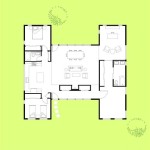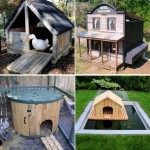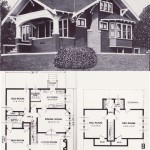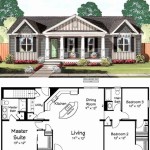3D rendering of house plans refers to the process of creating realistic and three-dimensional computer-generated images of a proposed building or space. These renderings provide a virtual representation of the structure, allowing architects, designers, and clients to visualize the final design in great detail before construction begins. For instance, a 3D rendering of a house plan can showcase the exterior and interior of the home, including its rooms, fixtures, and landscaping, giving a comprehensive understanding of the project’s intended outcome.
3D rendering technology has revolutionized the field of architecture and design, offering numerous benefits. By creating accurate and visually appealing representations, 3D renderings help improve communication and understanding between architects and stakeholders, facilitating more informed decision-making. They enable architects to experiment with different design options, explore various building materials, and assess the overall impact of the structure on its surroundings.
In the following sections, we will delve deeper into the specific advantages of 3D rendering for house plans, exploring how it enhances design accuracy, streamlines the construction process, and empowers clients with greater control over their dream homes.
3D rendering offers numerous advantages for house plans, including:
- Enhanced design accuracy
- Streamlined construction process
- Improved communication with stakeholders
- Exploration of design options
- Assessment of building materials
- Visualization of surroundings impact
- Client empowerment
- Reduced construction errors
- Increased project efficiency
By leveraging these benefits, architects and designers can create high-quality house plans that meet the specific needs and preferences of their clients.
Enhanced design accuracy
3D rendering technology allows architects and designers to create highly accurate and realistic representations of their house plans. This level of detail enables them to identify and address potential design issues early on, before construction begins. By visualizing the building in three dimensions, they can assess its proportions, scale, and overall composition, ensuring that the final structure aligns with the intended design concept.
Furthermore, 3D rendering allows for the precise placement of building elements, such as windows, doors, and fixtures. This accuracy helps to avoid costly errors and rework during construction, as the exact dimensions and specifications can be determined in advance. Additionally, 3D renderings facilitate the integration of different materials and finishes, enabling architects to evaluate their aesthetic compatibility and make informed decisions about the final design.
The ability to manipulate and adjust the 3D model in real-time allows for quick and efficient exploration of design alternatives. Architects can experiment with various layouts, materials, and lighting scenarios to find the optimal solution that meets the client’s requirements and preferences. This iterative process enhances the overall design quality and ensures that the final house plan is both aesthetically pleasing and functional.
Overall, the enhanced design accuracy provided by 3D rendering empowers architects and designers to create house plans that are precise, well-coordinated, and optimized for both functionality and aesthetics.
By leveraging the benefits of 3D rendering, architects can deliver high-quality house plans that minimize the risk of errors and ensure a smooth construction process. The resulting structures are not only visually appealing but also meet the specific needs and preferences of the clients.
Streamlined construction process
3D rendering of house plans also contributes to a streamlined construction process by providing accurate and detailed information to contractors and builders. This leads to several key benefits:
- Reduced construction errors: 3D renderings provide a comprehensive visual representation of the house plan, allowing contractors to identify potential clashes or inconsistencies early on. By addressing these issues during the planning phase, the likelihood of costly errors during construction is significantly reduced.
- Improved communication: 3D renderings facilitate clear and efficient communication between architects, contractors, and clients. The realistic and detailed images eliminate the need for extensive technical drawings and help everyone involved to visualize and understand the design intent.
- Increased project efficiency: 3D renderings enable contractors to plan and coordinate the construction process more effectively. They can use the renderings to determine the optimal sequence of construction activities, allocate resources efficiently, and minimize delays.
- Enhanced coordination: 3D renderings help to coordinate the work of different trades involved in the construction process. By providing a shared visual reference, contractors can ensure that all elements of the building, such as electrical, plumbing, and HVAC systems, are properly coordinated and installed.
Overall, the streamlined construction process facilitated by 3D rendering of house plans reduces the risk of errors, improves communication, increases project efficiency, and enhances coordination among the stakeholders involved.
Improved communication with stakeholders
3D rendering of house plans has revolutionized the way architects and designers communicate with stakeholders, including clients, contractors, and other professionals involved in the construction process. By creating realistic and immersive visualizations, 3D renderings enhance understanding, facilitate decision-making, and streamline the overall communication process.
- Enhanced client visualization: 3D renderings provide clients with a clear and comprehensive understanding of the proposed design. They can visualize the exterior and interior of their future home, including the layout, materials, and finishes, enabling them to make informed decisions about the design and construction process.
- Efficient feedback and collaboration: 3D renderings facilitate efficient feedback and collaboration between architects and clients. Clients can easily communicate their design preferences, suggest changes, and explore different options by providing feedback directly on the 3D model. This interactive process ensures that the final design aligns with the client’s vision and requirements.
- Clearer communication with contractors: 3D renderings provide contractors with a detailed and accurate representation of the design intent. This eliminates the need for extensive technical drawings and reduces the risk of misinterpretation or errors during construction. Contractors can use the renderings to plan the construction sequence, identify potential challenges, and coordinate with other trades involved in the project.
- Effective marketing and sales: 3D renderings are powerful marketing and sales tools. They can be used to showcase the proposed design to potential buyers or investors, helping to create excitement and generate interest in the property. By providing a realistic glimpse of the finished product, 3D renderings can enhance the perceived value and appeal of the house plan.
Overall, the improved communication with stakeholders facilitated by 3D rendering of house plans leads to better understanding, informed decision-making, and a more efficient and collaborative construction process.
Exploration of design options
3D rendering of house plans empowers architects and designers to explore a wide range of design options and make informed decisions about the final design. This exploration process involves experimenting with different design elements and assessing their impact on the overall aesthetics, functionality, and cost of the project.
- Layout and space planning: 3D renderings allow architects to experiment with different layouts and space planning concepts. They can visualize how different room configurations, circulation patterns, and spatial relationships affect the overall flow and functionality of the house plan. This exploration helps to optimize the use of space, create efficient and comfortable living environments, and enhance the overall livability of the home.
- Exterior design and materials: 3D renderings enable architects to explore various exterior design options, including different architectural styles, materials, and color schemes. They can assess how different materials and finishes interact with each other and how they complement the surrounding environment. This exploration process helps to create a cohesive and visually appealing exterior design that aligns with the client’s preferences and the overall architectural context.
- Interior design and finishes: 3D renderings provide a platform to explore different interior design concepts, including furniture layouts, color palettes, and material selections. Architects can visualize how different elements come together to create a harmonious and functional living space. This exploration process helps to refine the interior design, optimize space utilization, and create a personalized and inviting atmosphere for the occupants.
- Lighting and natural elements: 3D renderings allow architects to study the impact of natural and artificial lighting on the overall design. They can simulate different lighting conditions and assess how light interacts with different surfaces and materials. This exploration process helps to optimize the use of natural light, create visually appealing spaces, and reduce energy consumption.
By exploring various design options through 3D rendering, architects and designers can create house plans that are tailored to the specific needs and preferences of their clients. This exploration process enhances the overall design quality, ensures that the final design meets the client’s vision, and contributes to the creation of homes that are both aesthetically pleasing and functionally efficient.
Assessment of building materials
3D rendering of house plans allows architects and designers to assess the visual impact and compatibility of different building materials. By experimenting with various materials and finishes in a virtual environment, they can make informed decisions about the final material selections.
- Material visualization and aesthetics: 3D renderings provide a realistic representation of how different materials will look and interact with each other in the actual building. Architects can visualize the texture, color, and of different materials, helping them to create visually appealing and harmonious exterior and interior designs.
- Material compatibility and coordination: 3D renderings enable architects to assess the compatibility of different materials and identify potential clashes or inconsistencies. By visualizing how materials come together at junctions, corners, and transitions, they can ensure that the final design is cohesive and well-coordinated.
- Cost and budget implications: 3D renderings help architects and clients to evaluate the cost implications of different material choices. By visualizing the materials in a realistic context, they can make informed decisions about the allocation of the budget and select materials that align with the project’s financial constraints.
- Sustainability and environmental impact: 3D rendering can be used to assess the sustainability and environmental impact of different building materials. By simulating different material combinations and configurations, architects can explore energy-efficient options, reduce waste, and promote environmentally responsible design practices.
Overall, the assessment of building materials through 3D rendering empowers architects and designers to make informed material selections that enhance the aesthetics, functionality, and sustainability of their house plans.
Visualization of surroundings impact
3D rendering of house plans offers a powerful tool for visualizing the impact of the proposed building on its surroundings. Architects and designers can assess how the structure will interact with the existing environment and make informed decisions to minimize negative impacts and maximize the positive ones.
Environmental impact assessment: 3D renderings allow architects to evaluate the potential environmental impact of the house plan. By simulating different building orientations, landscaping options, and material choices, they can assess the impact on factors such as solar access, wind patterns, and stormwater management. This visualization helps to identify opportunities for sustainable design practices and reduce the ecological footprint of the building.
Contextual integration: 3D renderings enable architects to assess how the house plan integrates with the surrounding neighborhood and community. By visualizing the building in its context, they can evaluate its scale, massing, and architectural style in relation to the existing structures and urban fabric. This contextual analysis helps to ensure that the new house complements the surrounding environment and respects the local character.
Views and privacy: 3D renderings provide insights into the views and privacy implications of the house plan. Architects can simulate different viewpoints and perspectives to assess how the building will affect the views from neighboring properties and how it will maintain privacy for the occupants. This visualization helps to optimize the placement of windows, balconies, and other openings to maximize natural light and views while preserving privacy.
Landscaping and outdoor spaces: 3D renderings allow architects to visualize the relationship between the house and its surrounding landscape. By incorporating landscaping elements such as trees, shrubs, and water features into the renderings, they can assess the impact of the building on the outdoor environment and create harmonious and functional outdoor spaces.
Overall, the visualization of surroundings impact through 3D rendering empowers architects and designers to create house plans that are sensitive to their environment, minimize negative impacts, and enhance the overall livability of the community.
Client empowerment
3D rendering of house plans empowers clients by providing them with a clear and comprehensive understanding of the proposed design. By visualizing their future home in a realistic and immersive way, clients can make informed decisions about the design and construction process, ensuring that the final product aligns with their vision and preferences.
- Enhanced visualization and understanding: 3D renderings provide clients with a realistic and interactive way to visualize their future home. They can explore the design in detail, from different angles and perspectives, getting a better understanding of the layout, space planning, and overall aesthetics. This enhanced visualization helps clients to identify any potential issues or areas of concern early on, allowing them to make informed decisions about the design.
- Active participation and collaboration: 3D renderings facilitate active participation and collaboration between clients and architects or designers. Clients can provide feedback and suggest changes directly on the 3D model, allowing for real-time adjustments and modifications. This collaborative process ensures that the final design meets the client’s specific requirements and preferences, resulting in a house plan that is tailored to their lifestyle and aspirations.
- Informed decision-making: 3D renderings empower clients to make informed decisions throughout the design and construction process. By visualizing the project in its entirety, clients can assess the impact of different design choices, materials, and finishes on the overall aesthetics and functionality of their home. This informed decision-making process leads to greater satisfaction with the final product and reduces the likelihood of costly changes or rework during construction.
- Reduced anxiety and uncertainty: 3D renderings can significantly reduce anxiety and uncertainty for clients. By providing a realistic representation of the proposed design, clients can visualize their future home and address any concerns or doubts before construction begins. This visual clarity helps to alleviate anxiety and build confidence in the design process, making it a more enjoyable and stress-free experience for the clients.
Overall, 3D rendering of house plans empowers clients by providing them with enhanced visualization, enabling active participation, facilitating informed decision-making, and reducing anxiety and uncertainty. By leveraging this technology, clients can actively participate in the design process, ensuring that their dream home becomes a reality.
Reduced construction errors
3D rendering of house plans significantly reduces construction errors by providing a highly accurate and detailed visual representation of the proposed building. This advanced technology enables architects and contractors to identify and address potential issues early in the design process, before construction begins. By identifying and resolving these issues virtually, the likelihood of costly errors and rework during construction is greatly diminished.
One of the key ways 3D rendering reduces construction errors is through clash detection. Clash detection is the process of identifying areas where different building elements, such as structural components, mechanical systems, and electrical wiring, intersect or conflict with each other. Traditional methods of clash detection rely on 2D drawings and manual review, which can be time-consuming and prone to human error. However, 3D rendering software can automatically detect clashes and generate reports that highlight potential problems. This allows architects and contractors to address these issues during the design phase, ensuring that the final building is constructed according to plan and without any unforeseen complications.
Furthermore, 3D rendering allows for a more comprehensive review of the design by multiple stakeholders, including architects, engineers, contractors, and clients. By visualizing the project in a realistic and immersive way, all parties involved can identify and discuss potential issues that may not be apparent from 2D drawings alone. This collaborative review process helps to identify and resolve errors and omissions early on, reducing the risk of costly rework and delays during construction.
Additionally, 3D rendering can be used to simulate different construction scenarios and test the feasibility of design concepts. By creating virtual mock-ups, architects and contractors can identify potential challenges and develop strategies to mitigate risks. This proactive approach helps to minimize errors during the actual construction process, ensuring a smoother and more efficient build.
Overall, the reduced construction errors facilitated by 3D rendering of house plans lead to significant cost savings, improved project quality, and reduced construction timelines. By identifying and resolving issues early in the design process, architects and contractors can deliver buildings that are constructed accurately and efficiently, meeting the expectations of clients and stakeholders.
Increased project efficiency
3D rendering of house plans significantly increases project efficiency by streamlining communication, improving coordination, and reducing the need for costly rework. Here’s how 3D rendering contributes to increased project efficiency:
Enhanced communication: 3D renderings provide a shared visual reference for architects, contractors, and clients, eliminating the need for extensive technical drawings and reducing the potential for misinterpretation. By visualizing the design in a realistic and immersive way, all parties involved can quickly and easily understand the design intent, reducing the risk of errors and delays.
Improved coordination: 3D renderings facilitate better coordination among different trades involved in the construction process. By providing a detailed and comprehensive representation of the building, contractors can identify potential clashes and conflicts between different building systems, such as electrical, plumbing, and HVAC. This early identification of potential issues allows for proactive planning and coordination, reducing the likelihood of costly rework and delays during construction.
Reduced rework: 3D rendering allows architects and contractors to identify and address potential design issues and errors before construction begins. By visualizing the project in a realistic and immersive way, they can identify areas where the design may not be feasible or where there may be conflicts between different building elements. This proactive approach helps to minimize the need for costly rework during construction, saving time and resources.
Time savings: 3D rendering can significantly reduce the time required for the design and construction process. By identifying and resolving issues early on, architects and contractors can avoid costly delays and rework during construction. Additionally, 3D renderings can be used to create realistic marketing materials, which can help to secure financing and attract potential buyers or investors, further reducing the time to market.
Overall, the increased project efficiency facilitated by 3D rendering of house plans leads to significant cost savings, improved project quality, and reduced construction timelines. By streamlining communication, improving coordination, and reducing the need for rework, 3D rendering empowers architects and contractors to deliver high-quality buildings in a more efficient and timely manner.


![]()







Related Posts








